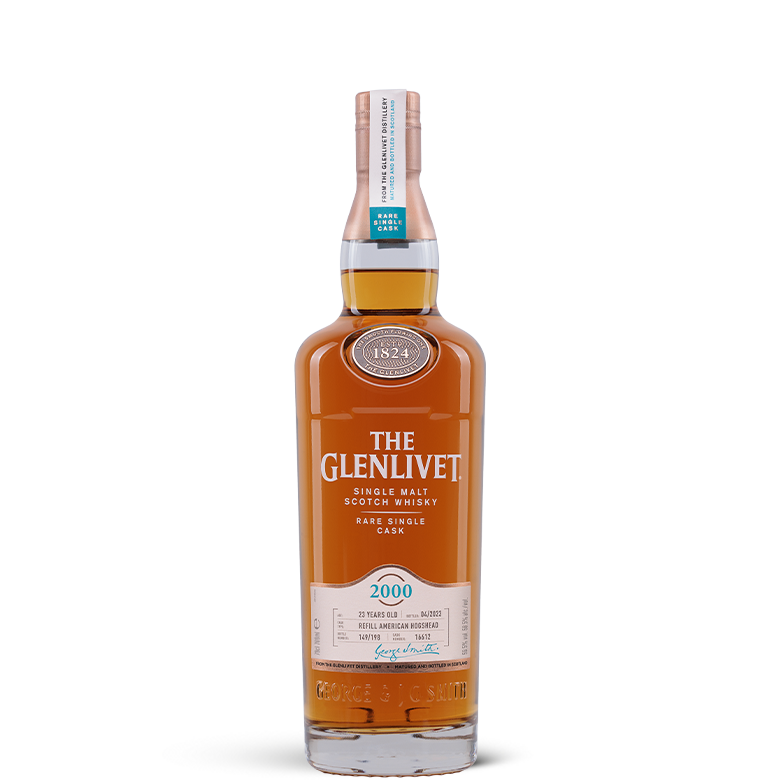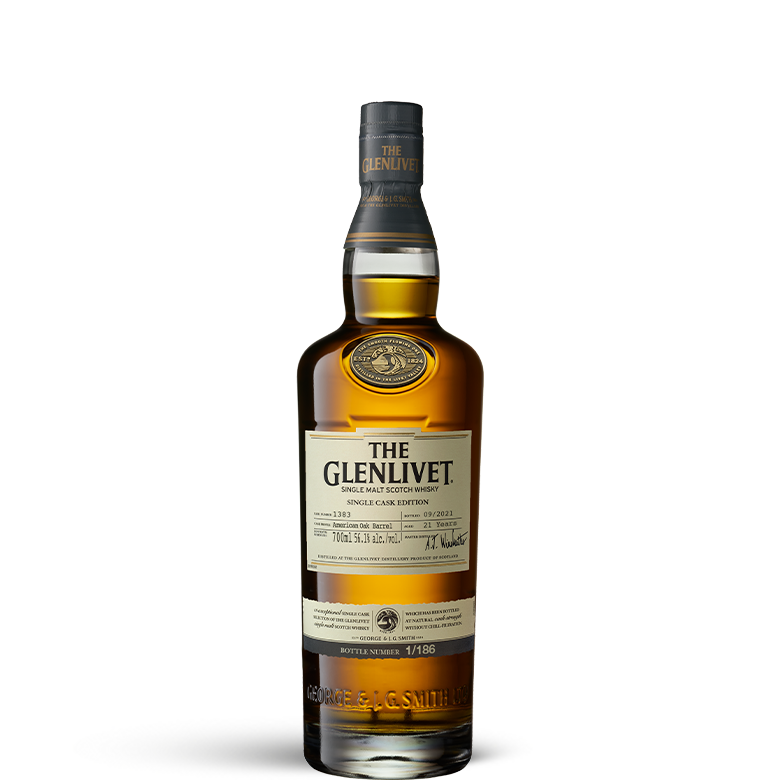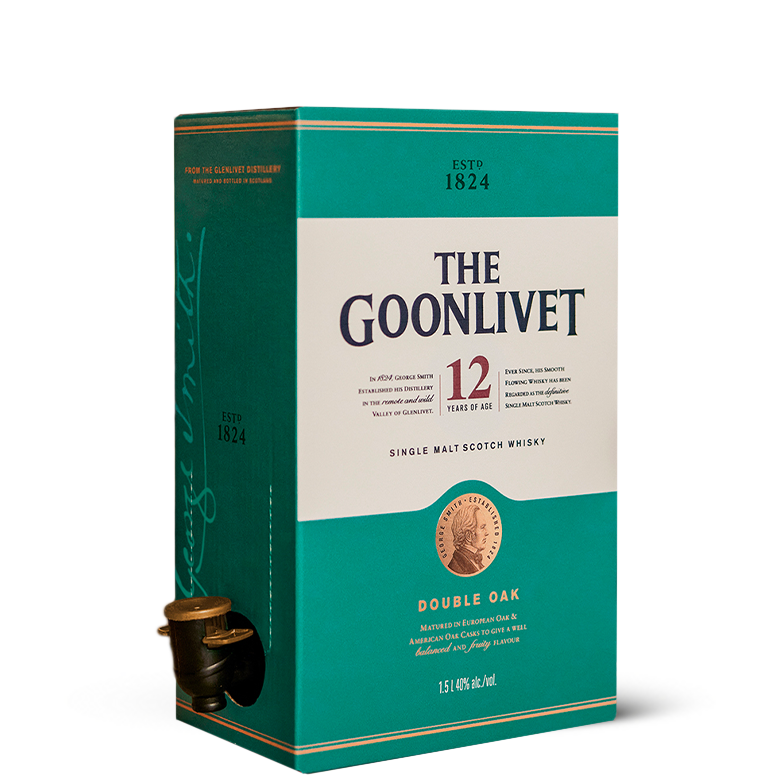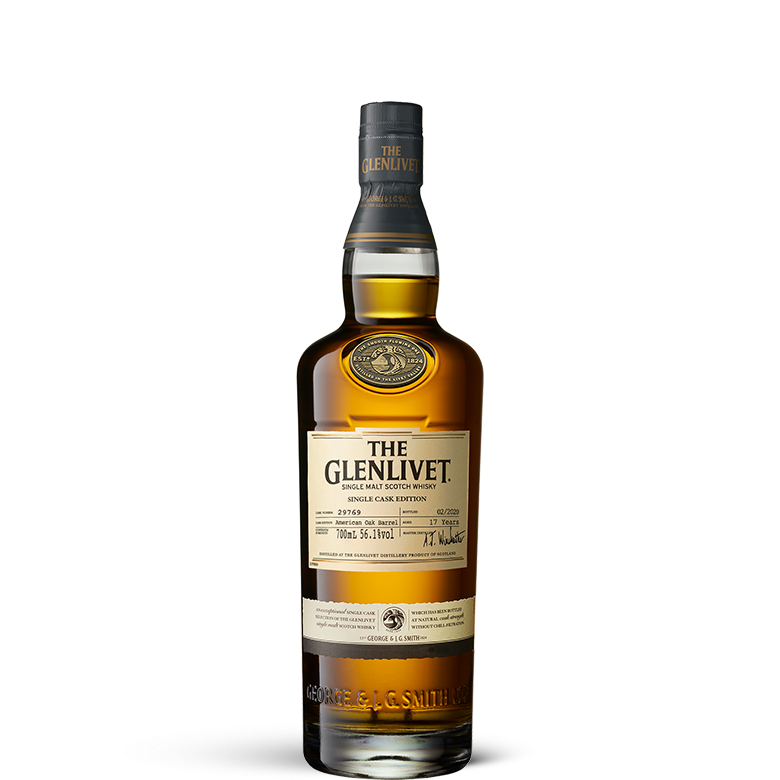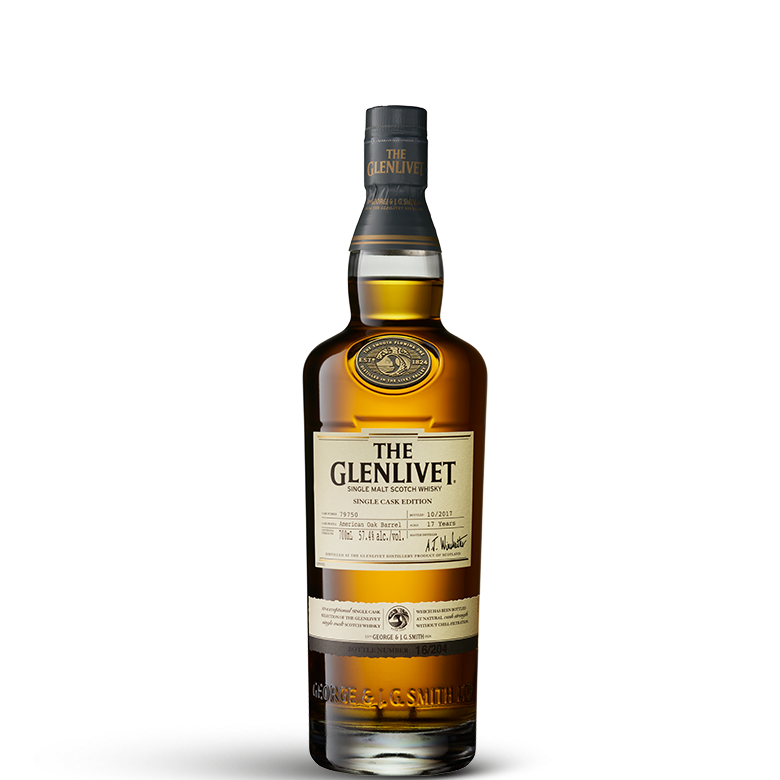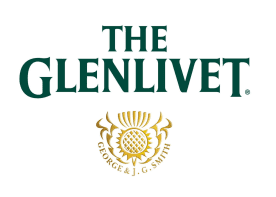

The Glenlivet Distillery
Glenlivet Distillery was established by farmer – which in those days in the region was code for illicit distiller - George Smith. It was the first distillery in Speyside to be licensed under the new Excise Act of 1823. This act provided the framework for black market operators to go legitimate and create a scalable industry.
However, with this act came understandable danger. Whisky smuggling had been underway for decades and the gangs were both well-established and relatively wealthy. Many new distilleries were destroyed by these gangs. With Smith now operating his distillery freely - angering many of the long-time illegal producers who did not have a license - multiple threats were made on his life. George famously travelled with a pair of pistols as protection from attacks by his former colleagues.
His distillery and his Glenlivet whisky were a success and soon he had the money to build a second distillery at nearby Delnabo in 1850. The original Drumin distillery burnt down in 1858 and Delnabo was closed the following year due to water issues but Smith had already started working on a larger facility at Minmore which opened in 1859 and still runs today.
The Smith family trademarked Glenlivet and in 1881 sued companies that were using Glenlivet in their names. ‘Glenlivet’ had always been used since the smuggling era as shorthand for what we now know as Speyside whiskies with distilleries as far north as Elgin adding the title to their brands. Three years later a compromise was signed which allowed the Smith distillery to call itself ‘The Glenlivet’, while competing brands could only hyphenate their name with ‘-Glenlivet’.
The business continued to thrive and two more stills were added in 1897. Under astute management The Glenlivet distillery successfully navigated the choppy waters of both the Pattinson Crisis and the Great Depression.
It was after the Second World War that it really began its great rise. By then the firm was being run by Bill Smith Grant who saw the exciting new opportunities the American market offered for the whisky.
Overseas demand for Scotch made the whisky an ideal export and the distillery received preferential access to resources such as manpower, fuel and barley, despite ongoing bread rationing for the poor general population.
After the 1952 merger with Glen Grant, the firm joined forces with blender Hill, Thompson & Co and the Longmorn/Benriach distilleries. In 1978, three years after Bill Smith Grant’s death, Seagram (owner of Chivas) paid £46 million for a controlling stake. Seagram sold their alcohol interests to Pernod Ricard and Diageo in 2000 with ownership of Glenlivet Distillers passing to Pernod Ricard, who later sold Glen Grant Distillery to Campari Group in 2005.
The Glenlivet Distillery History
George Smith died in 1871 and his son John Gordon Smith inherited the distillery. The quality of the product from their distillery had resulted in the other distilleries in the area renaming their products to "Glenlivet" and by the time of George's death, several distillers were doing so. J.G. Smith decided to take legal action and tried to claim ownership on The Glenlivet name, this legal action was only partially successful - the verdict forced other distillers in the area to stop calling their whisky Glenlivet and gave J.G. Smith and the blender Andrew Usher sole permission to use the brand, but permitted other distilleries to hyphenate their distillery name with the "Glenlivet" name, which resulted in new distillery names such as The Glen Moray-Glenlivet Distillery, a distillery which is situated nearby.
The distillery remained open throughout the Great Depression, an event which affected many other distilleries; it wasn't until the Second World War that the distillery was mothballed for the first time, by Government decree. In the aftermath of World War Two, Britain was heavily indebted and needed to export large quantities of goods to earn foreign revenue (mainly United States dollars). Distilling was an ideal industry with whisky much in demand overseas. Distilling restrictions were rapidly lifted and output from the distillery was at pre-war levels by 1947, despite ongoing barley, fuel, and manpower limitations. Bread rationing was retained until 1948 in order to ensure supplies of grain for the distilleries.
Glenlivet Distillery (George & J.G. Smith, Ltd.) merged with the Glen Grant Distillery (J. & J. Grant Glen Grant, Ltd.) in 1953 to form The Glenlivet and Glen Grant Distillers, Ltd.. The company would go on to merge with Hill Thomson & Co., Ltd. and Longmorn-Glenlivet Distilleries, Ltd. in 1970 before changing their name to Glenlivet Distillers Ltd in 1972. The company was then purchased by Canadian drinks and media company Seagram in 1977. Seagram's alcohol production interests were acquired by Pernod Ricard and Diageo during 2000, with ownership of Glenlivet Distillers passing to Pernod Ricard. While Glen Grant Distillery was sold to Campari Group in 2005 Pernod Ricard kept control over the Glenlivet and Aberlour single malt whisky brands.
Ready to access exclusive member benefits?
Join free for access to exclusive single malt from the world’s best distilleries
The Glenlivet Distillery History
George Smith died in 1871 and his son John Gordon Smith inherited the distillery. The quality of the product from their distillery had resulted in the other distilleries in the area renaming their products to "Glenlivet" and by the time of George's death, several distillers were doing so. J.G. Smith decided to take legal action and tried to claim ownership on The Glenlivet name, this legal action was only partially successful - the verdict forced other distillers in the area to stop calling their whisky Glenlivet and gave J.G. Smith and the blender Andrew Usher sole permission to use the brand, but permitted other distilleries to hyphenate their distillery name with the "Glenlivet" name, which resulted in new distillery names such as The Glen Moray-Glenlivet Distillery, a distillery which is situated nearby.
The distillery remained open throughout the Great Depression, an event which affected many other distilleries; it wasn't until the Second World War that the distillery was mothballed for the first time, by Government decree. In the aftermath of World War Two, Britain was heavily indebted and needed to export large quantities of goods to earn foreign revenue (mainly United States dollars). Distilling was an ideal industry with whisky much in demand overseas. Distilling restrictions were rapidly lifted and output from the distillery was at pre-war levels by 1947, despite ongoing barley, fuel, and manpower limitations. Bread rationing was retained until 1948 in order to ensure supplies of grain for the distilleries.
Glenlivet Distillery (George & J.G. Smith, Ltd.) merged with the Glen Grant Distillery (J. & J. Grant Glen Grant, Ltd.) in 1953 to form The Glenlivet and Glen Grant Distillers, Ltd.. The company would go on to merge with Hill Thomson & Co., Ltd. and Longmorn-Glenlivet Distilleries, Ltd. in 1970 before changing their name to Glenlivet Distillers Ltd in 1972. The company was then purchased by Canadian drinks and media company Seagram in 1977. Seagram's alcohol production interests were acquired by Pernod Ricard and Diageo during 2000, with ownership of Glenlivet Distillers passing to Pernod Ricard. While Glen Grant Distillery was sold to Campari Group in 2005 Pernod Ricard kept control over the Glenlivet and Aberlour single malt whisky brands.
Whisky Region and Style
The Glenlivet’s whiskies are noted above all others to best represent the modern style of the Speyside whisky region. Many of their whiskies are crisp and fragrant and often feature green fruit flavours of apples and pears with floral aromas and a hint of sweetness.
The proliferation of finishes, of course, means there always exceptions to the rule. The Glenlivet Nadurra Oloroso Cask expression, for example, is smooth and creamy with the flavours of spicy orange marmalade and dark chocolate.
The abundance and quality of its water is the principal reason why whisky distilleries have flocked to the Speyside whisky region. Around 50 litres of water are needed to produce 1 litre of whisky. The region’s water also has the lowest level of dissolved minerals than any other region in Scotland, making it ideal for mashing.
The Glenlivet Whisky Making Process
The Glenlivet distillery draws water from Josie's Well and other springs a short distance from the distillery. The malt comes from Crisp Maltings, Portgordon.
The distillery’s 2010 expansion and refurbishment upgraded Glenlivet into one of the most modern distilleries in Speyside, featuring a vast Brigg’s mash tun, 7 wash stills each with a capacity of 15,000 litres and 7 spirit stills with a capacity of 10,500 litres.
The Glenlivet distillery uses wooden washbacks to ferment their malted and mashed barley for approximately two days. Wooden washbacks are more difficult and expensive to maintain but help impart a distinctive floral quality to the whisky.
Glenlivet's stills are lantern shaped with long, narrow necks, all of which helps to produce a light tasting spirit by encouraging contact between the whisky and the copper. The copper strips the whisky of any impurities it may have.
The Glenlivet uses a mixture of traditional oak casks, American Oak ex-bourbon casks, ex-sherry, French Limousin oak and now ex-Cognac casks.
The current Master Distiller at The Glenlivet distillery is Alan Winchester, who has held the role since 2009.
The Glenlivet Whisky
Some of the most popular The Glenlivet single malt whiskies include The Glenlivet 12, The Glenlivet 14, The Glenlivet 15, The Glenlivet 18, The Glenlivet Founders Reserve and The Glenlivet Nadurra Oloroso.
More recently The Glenlivet has added The Glenlivet 12 – Illicit Still. This Limited Edition is inspired by the founder's original and illegally distilled Glenlivet whisky and is the first in an annual series called 'The Original Stories'.
We have been privileged to bring our members four exceptional single malt whiskies from The Glenlivet Distillery; The Glenlivet 2000 First Fill Ex-American Oak Barrel, The Glenlivet 2003 First Fill Ex-Oloroso Sherry Butt – so good and so popular that we brought it back a second time – The Glenlivet Captain’s Reserve and The Glenlivet Nadurra First Fill American Oak.
The Glenlivet Achievements
Today, whisky production at the distillery sits 5,900,000 proof litres per annum. The majority of this – enough for 6 million bottles – is sold as The Glenlivet single malt, with the remainder being used in Pernod Ricard's blended whisky brands, including Chivas Regal and Royal Salute.
The Glenlivet is the best-selling malt whisky in the USA and the fourth best-selling in the UK. Glenlivet is also the world’s second best-selling single malt whisky (after Glenfiddich at Number 1) with current sales at over 13.6 million bottles per annum.
The Glenlivet Distillery History
Illicit distilleries were commonplace throughout the Speyside area from 1700s but were largely made redundant with the passing of the Excise Act in 1823. It was under this legislation that legal distilleries could be formed, subject to holding a license. Alexander Gordon, 4th Duke of Gordon, was allegedly instrumental in the passing of this legislation. Although there is no historical record of his involvement in the issue, his tenant, George Smith, who was operating an illicit distillery at the time, became the first person in Glenlivet to apply for and receive a license to legally produce spirit.
This would prove to be an unpopular decision; every other distiller was operating illegally at the time and hoping the new Excise Act would be repealed, something which would not happen if some distillers accepted the new law. Threats were made against George Smith, so George Gordon provided Smith with two pistols to be used to ensure both his own safety and that of the distillery. In 1824, The Glenlivet distillery was established at Upper Drumin by George and his youngest son John Gordon Smith.
George Smith established a second distillery during 1849, named the Cairngorm-Delnabo Distillery but by 1855 or 1856, both distilleries were running at full capacity, and were unable to meet rising demand. The operation of two separate sites was also proving difficult and expensive, so plans were formed around the same time to build a new, larger distillery further down the hill at Minmore.
Construction of this new distillery was underway when the old Upper Drumin distillery was destroyed by fire during 1858. Construction of the new Minmore distillery was sped up and salvageable equipment from the Upper Drumin distillery was transferred to the new Mimmore distillery. The Delnabo distillery was closed at the same time and the best parts of the equipment were also transferred to the Minmore plant. Production commenced at the new plant during 1859 and it was around the same time the legal entity of George & J.G. Smith, Ltd. was formed.
Ready to access exclusive member benefits?
Join free for access to exclusive single malt from the world’s best distilleries
George Smith died in 1871 and his son John Gordon Smith inherited the distillery. The quality of the product from their distillery had resulted in the other distilleries in the area renaming their products to "Glenlivet" and by the time of George's death, several distillers were doing so. J.G. Smith decided to take legal action and tried to claim ownership on The Glenlivet name, this legal action was only partially successful - the verdict forced other distillers in the area to stop calling their whisky Glenlivet and gave J.G. Smith and the blender Andrew Usher sole permission to use the brand, but permitted other distilleries to hyphenate their distillery name with the "Glenlivet" name, which resulted in new distillery names such as The Glen Moray-Glenlivet Distillery, a distillery which is situated nearby.
The distillery remained open throughout the Great Depression, an event which affected many other distilleries; it wasn't until the Second World War that the distillery was mothballed for the first time, by Government decree. In the aftermath of World War Two, Britain was heavily indebted and needed to export large quantities of goods to earn foreign revenue (mainly United States dollars). Distilling was an ideal industry with whisky much in demand overseas. Distilling restrictions were rapidly lifted and output from the distillery was at pre-war levels by 1947, despite ongoing barley, fuel, and manpower limitations. Bread rationing was retained until 1948 in order to ensure supplies of grain for the distilleries.
Glenlivet Distillery (George & J.G. Smith, Ltd.) merged with the Glen Grant Distillery (J. & J. Grant Glen Grant, Ltd.) in 1953 to form The Glenlivet and Glen Grant Distillers, Ltd.. The company would go on to merge with Hill Thomson & Co., Ltd. and Longmorn-Glenlivet Distilleries, Ltd. in 1970 before changing their name to Glenlivet Distillers Ltd in 1972. The company was then purchased by Canadian drinks and media company Seagram in 1977. Seagram's alcohol production interests were acquired by Pernod Ricard and Diageo during 2000, with ownership of Glenlivet Distillers passing to Pernod Ricard. While Glen Grant Distillery was sold to Campari Group in 2005 Pernod Ricard kept control over the Glenlivet and Aberlour single malt whisky brands.
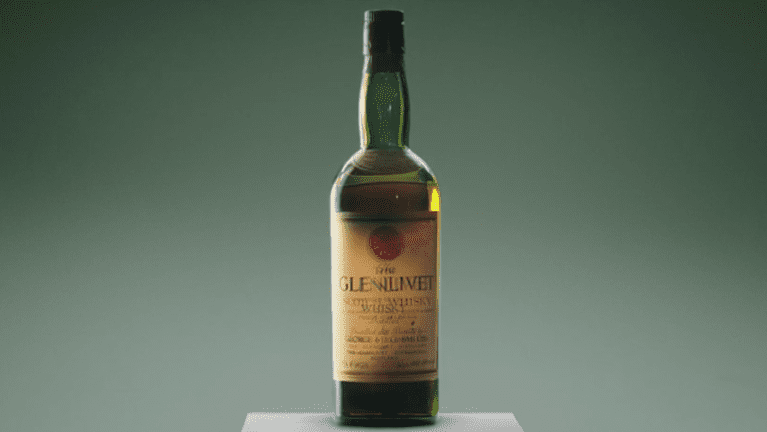
The Importance of THE
Ian Logan, International Brand Ambassador for The Glenlivet, introduces the new ex-Cognac cask finished Captain's Reserve to The Whisky Club in Australia.
![]()
The Glenlivet WhiskyPublished on Sep 20, 2018 |
Ready to access exclusive member benefits?
Get access to exclusive whisky parties and discounted event tickets
DISTILLERY Quick Facts
REGION:Highlands |
PLACE OF ORIGIN:Balblair Distillery, Eddertion, Ross-shire, IV19 1LB, |
FOUNDED:1790 |
|
WATER SOURCE:Allt Dearg Burn |
NUMBER OF STILLS:1 wash still & 1 spirit still |
CAPACITY:1,600,000 litres per annum |
REGION:Highlands |
PLACE OF ORIGIN:Balblair Distillery, Eddertion, Ross-shire, IV19 1LB, |
|
FOUNDED:1790 |
WATER SOURCE:Allt Dearg Burn |
NUMBER OF STILLS:1 wash still & 1 spirit still |
|
Previous Glenlivet Whiskies of the Month:
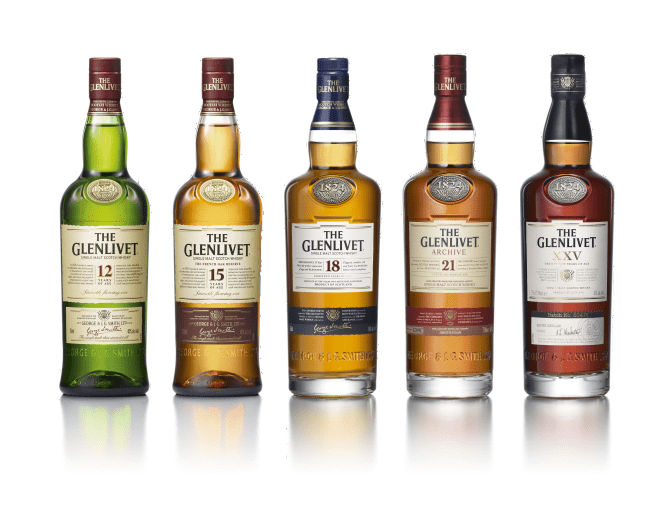

Other Glenlivet Whiskies
Although they haven’t been Whisky of the Month yet, these other whiskies from Glenlivet are top notch. Have a look through them now as you never know whats coming up for Whisky of the Month.


Previous Whisky Club Glenlivets
Core Expressions
Old & Rare



